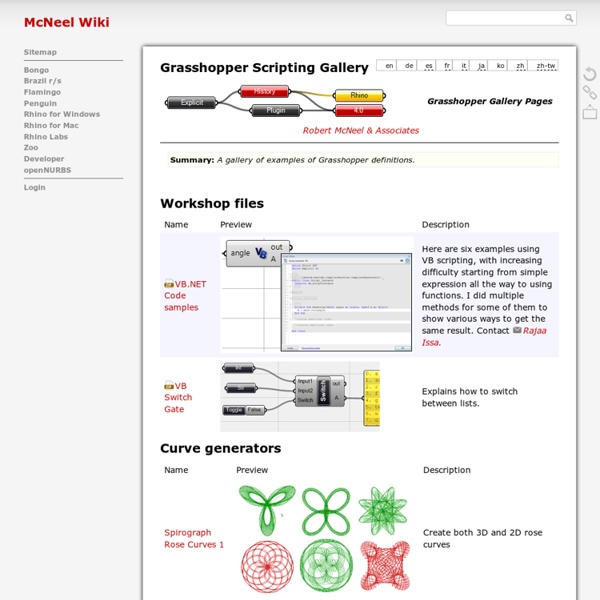Grasshoppergallery
VERTEX DIGITAL DESIGN
[Sub]Code
This page is set up to host bits of codes and sample algorithms. Those algorithms are free to be explored or even shared with proper recognition to the author.Please let me know if you reached any interesting result using any piece of the code provided. Before downloading anything from Digital [Sub]stance you consent to the following license agreement Digital [Sub]stance by Marios Tsiliakos is licensed under a Creative Commons Attribution-NonCommercial-ShareAlike 3.0 Unported License. Based on a work at digitalsubstance.wordpress.com. “If you Enjoyed anf found the content of this blog useful please consider donating to keep Digital [Sub]stance up and running.” Grasshopper Definitions
Related:
Related:



